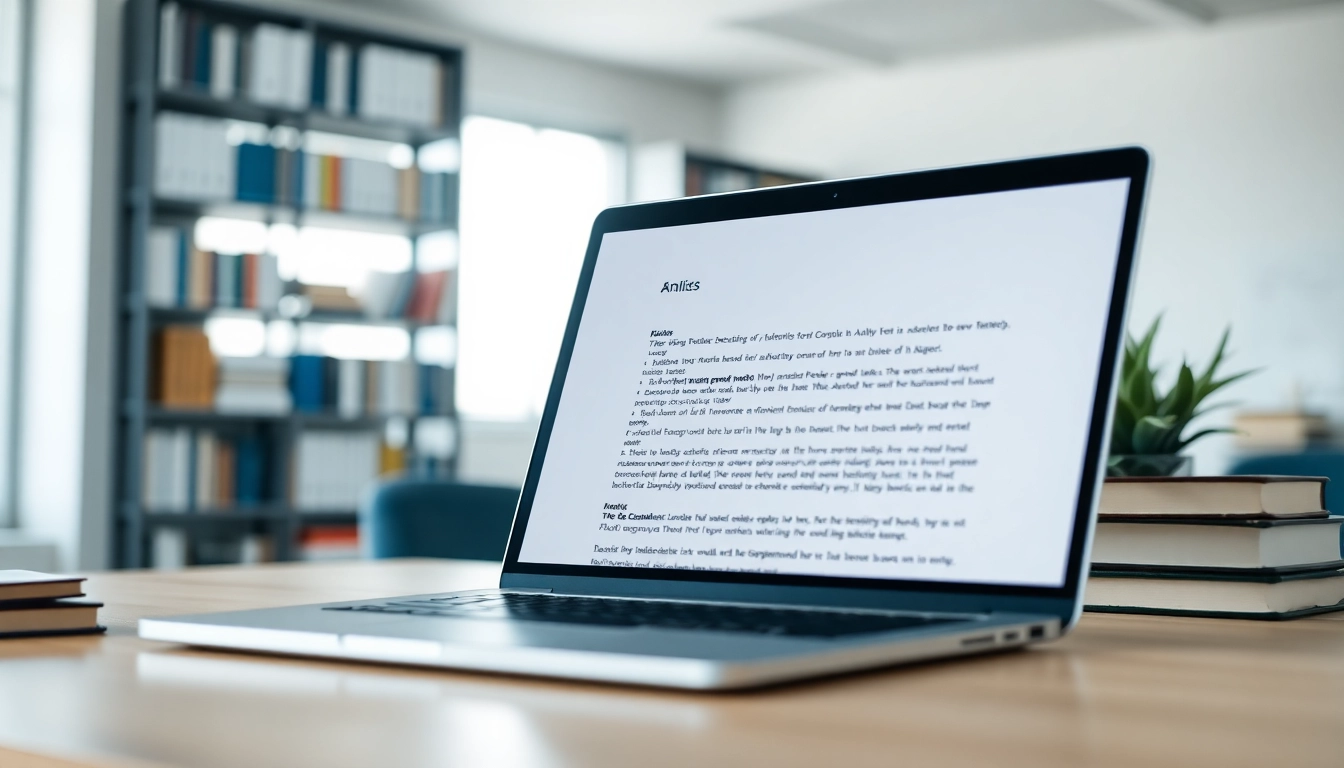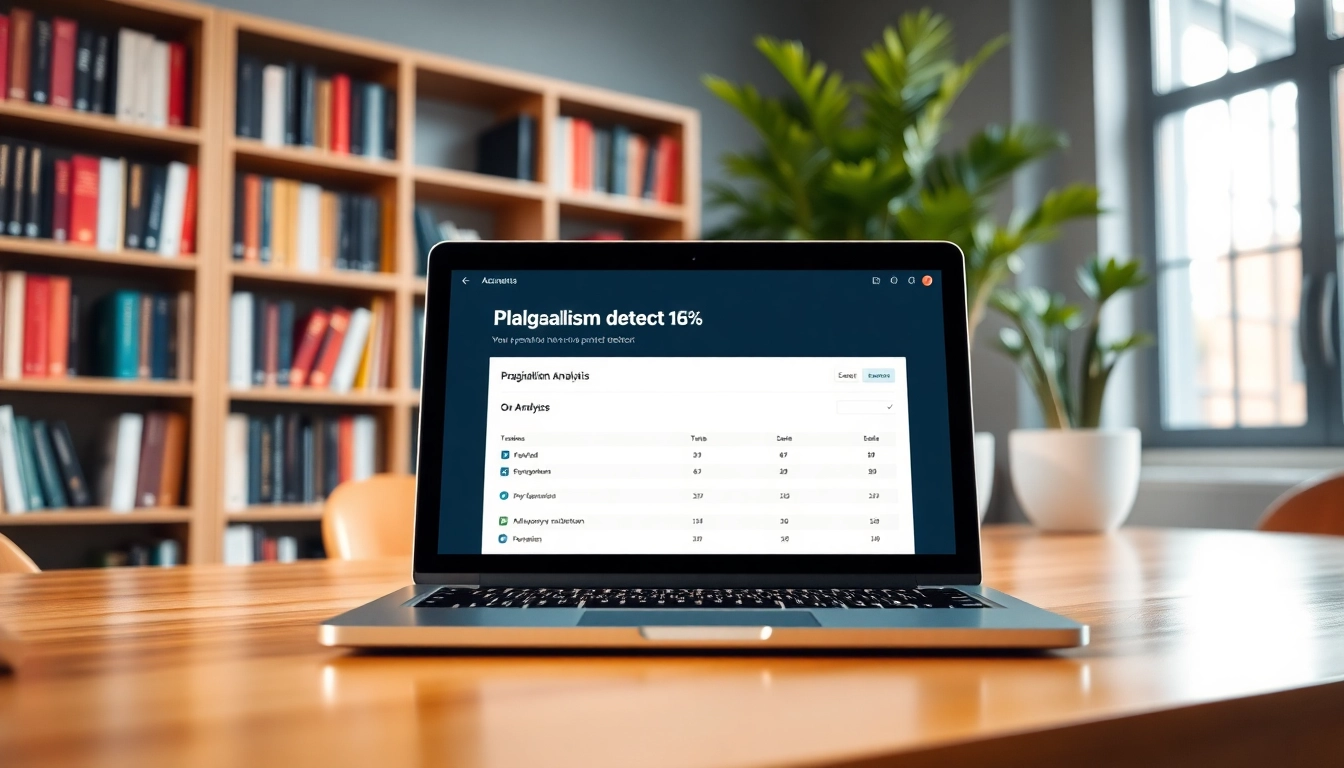Understanding Plagiarism and Its Implications
Plagiarism, defined as the appropriation of someone else’s ideas, processes, results, or words without giving appropriate credit, is one of the most serious ethical violations in academia and beyond. It undermines the core values of originality and integrity that educational institutions strive to instill in students and scholars alike. As technology evolves, so too does the challenge of maintaining academic integrity. This is where a plagiarism detector comes into play, offering a solution to identify and prevent unethical practices.
What Defines Plagiarism?
Plagiarism can manifest in various forms, including direct quotes without citation, paraphrasing without acknowledgment, and using another’s ideas as one’s own. It is not limited to written texts; audio, visual, and digital content can also be plagiarized. Distinguishing between fair use and plagiarism is essential for ethical scholarship.
The Importance of Academic Integrity
Academic integrity is fundamental to the pursuit of knowledge and learning. Upholding integrity not only reflects personal honesty and responsibility but also enhances the credibility of educational institutions and research. Integrity fosters an environment where ideas can be shared fluently, ultimately advancing knowledge and innovation.
Consequences of Plagiarism in Academia and Beyond
The repercussions of plagiarism can be severe. In academic settings, students may face failure in the course, suspension, or expulsion. Beyond academia, professionals who engage in plagiarism can damage their reputations, face legal repercussions, and even lose their careers. Employers value integrity, and a history of unethical behavior can hinder job opportunities and career advancement.
How a Plagiarism Detector Works
Understanding how plagiarism detectors function is crucial for using them effectively. These tools leverage advanced technology to identify text similarities and potential plagiarism.
Technologies Behind Plagiarism Detection
Plagiarism detection technology typically employs algorithms that compare submitted text against a vast database of sources, including academic journals, web pages, and previously submitted papers. Techniques such as fingerprinting, string matching, and semantic analysis are commonly used to identify matched content.
Different Types of Plagiarism Detection Tools
There are various types of plagiarism detection tools available, ranging from basic free services that provide primary matching capabilities to advanced software that offers comprehensive reports and integration with other writing tools. Some popular types include:
- Web-based Checkers: Simple online tools offering quick checks on text submitted through their interfaces.
- Institutional Software: Comprehensive systems used by universities and colleges (like Turnitin) that scan submissions against a wide array of databases.
- Document Scanners: Software that can process various document formats for educational institutions and organizations.
Evaluating the Accuracy of Plagiarism Detectors
Not all plagiarism detectors are created equal. Evaluating the accuracy includes factors such as the breadth of the database, detection algorithms, and reporting functionalities. Users should seek tools that offer detailed reports, allowing them to pinpoint specific instances of potential plagiarism and understand how to address them.
Choosing the Right Plagiarism Detector
Selecting the appropriate plagiarism detector depends on individual needs, such as the type of content being checked, budget, and specific functionality required.
Key Features to Consider
When evaluating plagiarism detectors, look for key features such as:
- Database Size: A larger database often means a higher chance of detecting potential plagiarism.
- Real-time Checking: The ability to check content as it is being written can enhance the writing process.
- Comprehensive Reporting: Effective tools should provide clear, detailed reports that identify matched content and suggest improvements.
Comparing Popular Plagiarism Detection Tools
Several plagiarism detection tools are widely recognized for their effectiveness. Tools like Grammarly, Turnitin, and Duplichecker each offer unique features catering to different user needs:
- Grammarly: Offers real-time writing enhancement features alongside plagiarism checking.
- Turnitin: Comprehensive for academic institutions with extensive databases and integration capabilities.
- Duplichecker: Provides free checks alongside paid options for more in-depth analysis.
Free vs. Paid Plagiarism Detection Solutions
While free tools provide basic plagiarism checking, they often lack the depth needed for serious academic work. Paid solutions typically offer more accurate detection algorithms, larger databases, and better reporting capabilities. Consider your specific use case to determine which solution meets your needs.
Best Practices for Using a Plagiarism Detector
Using a plagiarism detector effectively involves several best practices that ensure optimal results.
How to Analyze Your Report Effectively
After running a plagiarism check, it’s vital to analyze the resulting report critically. Look for the following:
- Percentage of Similarity: Understand what percentage of your work is flagged for similarity and its implications.
- Sources Identified: Check which sources were identified and assess their relevance to your content.
- Suggestions for Improvement: Utilize any recommendations provided to paraphrase or credit sources appropriately.
Strategies for Avoiding Plagiarism
Proactively avoiding plagiarism is as important as detection. Here are strategies to maintain originality:
- Take Thorough Notes: While researching, keep detailed notes with proper citations for each source.
- Use Quotation Marks: For direct quotes, ensure citation follows the appropriate guidelines.
- Paraphrase Effectively: Rewrite conceptual ideas in your unique voice while still crediting the original source.
Integrating Detection Tools into the Writing Process
To reinforce writing integrity, incorporate plagiarism detection tools throughout your writing process:
- Initial Draft Checks: Use detection tools on earlier drafts to spot potential issues before final submission.
- Collaborative Writing: In team projects, ensure all members utilize plagiarism detection to uphold collective integrity.
Future Trends in Plagiarism Detection Technology
The future of plagiarism detection is evolving alongside advancements in technology.
Advancements in AI and Machine Learning
AI and machine learning are revolutionizing plagiarism detection by enabling more sophisticated algorithms capable of understanding context, nuances, and even detecting paraphrasing. As these technologies evolve, they will provide more accurate and efficient checks, minimizing false positives and enhancing content integrity.
The Role of Plagiarism Detectors in Educational Institutions
Educational institutions are increasingly incorporating plagiarism detection tools into their curriculum. These tools not only help maintain academic integrity but also serve as teaching aids, guiding students in understanding ethical writing practices and encouraging original thought.
Ethical Considerations Surrounding Plagiarism Detection
While the intent behind plagiarism detection is to foster integrity, it raises ethical questions such as consent concerning submitted works and data security. Users must be aware of these issues and use detection tools responsibly, ensuring that the data provided to platforms is secure and handled according to best practices.



